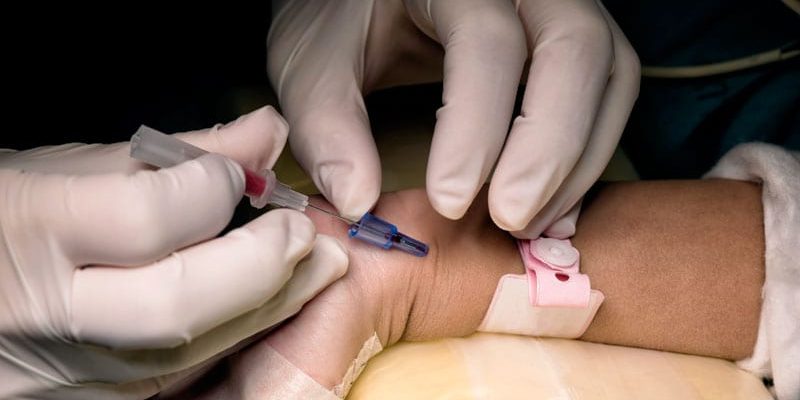In what may be the first randomized trial to compare coronary intervention access using the distal or proximal radial arteries, researchers have found no significant differences between the two in hand function a year after the procedure.
The distal radial artery (DRA) access point is just below the thumb on the inside of the wrist. The proximal radial artery (PRA) entry is in the inside lower forearm above the wrist.

Dr Karim Al-Azizi
“There has been growing interest in the use of distal radial access given its ease of hemostasis, lower incidence of radial artery occlusions, as well as the more ergonomic favorable setup for a left radial access, which is typically utilized in patients with prior CABG who undergo a cardiac catheterization when used as alternative to femoral artery access,” Karim Al-Azizi, MD, of Texas A&M University, an interventional cardiologist and associate program director of the cardiology fellowship at Baylor Scott & White Health, in Plano, Tex., said in an interview.
Dr. Al-Azizi presented the late-breaking 1-year results of the DIPRA–for Distal vs. Proximal Radial Artery–study at the Society for Cardiovascular Angiography & Interventions annual scientific sessions. The 30-day results of the DIPRA trial were presented in 2022 at this meeting.
Dr. Al-Azizi said DIPRA is the first randomized, controlled trial comparing hand function outcomes with the two approaches. “I think the biggest question for most investigators and most practitioners is that, is this safe on the hand? Are we doing the right thing by going into the radial artery in the anatomical snuff box in proximity to the radial nerve and would that affect motor function?” he said. “And it does not seem like it from a head-to-head comparison of proximal versus distal access.”
The DIPRA study randomized 300 patients 1:1 to cardiac catheterization through either the distal or proximal access. Of those, 216 completed 1-year follow-up, 112 randomized to DRA and 104 to PRA.
The study used three metrics to evaluate hand function: hand-grip strength; pinch test, which measured the strength of a pinch between the thumb and index finger; and QuickDASH, an abbreviated version of the Disabilities of the Arm, Shoulder, and Hand questionnaire, in which participants self-evaluate their hand function. Study protocol mandated that operators use ultrasound guidance for DRA access.
The 1-year results of all three measures showed no significant difference in change of hand function from baseline between the two groups. The composite average score change was –0.07 (–0.41, 0.44) for the DRA patients and –0.03. (–0.36, 0.44) for the PRA group (P = .59).
One-year change for the specific hand function measures for DRA and PRA, respectively, were: hand grip, 0.7 (–3, 4.5) vs. 1.3 (–2, 4.3) kg (P = .57); pinch grip, –0.1 (–1.1, 1) vs. –0.3 (–1, 0.7) kg (P = .66); and none for change in the QuickDASH score (–6.6, 2.3 vs. –4.6, 2.9) points (P = .58).
Outcomes at intervention were also similar. Bleeding incidence was 0% and 1.4% (P = .25) in the respective groups. Successful RA access was achieved in 96.7% and 98% (P = .72).
Baseline characteristics were balanced between the two groups: 75% were male; mean age was 66.6 ± 9.6 years; 32% had diabetes; 77% had hypertension; and 19% had a previous percutaneous coronary intervention.
One key strength of the DIPRA study Dr. Al-Azizi noted is that it included some investigators who were at the early stage of the learning curve with the procedure. A limitation is that it didn’t evaluate hand numbness or tingling, but hand sensory testing is “very subjective,” he said. “To avoid confusion, we decided to go with the more repeatable questionnaire rather than a sensation or sensory test,” he added.
The next step for his research team is to conduct a meta-analysis of studies that have evaluated DRA and PRA, Dr. Al-Azizi said.
“Slow to the party”
U.S. interventional cardiologists have been “slow to the party” in adopting radial artery access for PCI, said David A. Cox, MD, of Sanger Heart and Vascular Institute in Charlotte, N.C., and SCAI communications committee chair. Even now uptake is low, compared with the rest of the world, he said.
“I can tell you what patients care about: Did you have to stick my groin?” he said at a SCAI press conference. “What they just want to know is that there are no issues with hand function.”
Some patients who need fine motor hand function would still opt for femoral access, he said.
“Are we looking at the right metric?” he asked Dr. Al-Azizi. “It took a long time to get American doctors to stick the radial, so why would I want to learn distal radial artery if I’m really pretty good at proximal and if it’s not inferior?”
Dr. Al-Azizi noted that previous studies showed a trend toward a lower incidence of radial artery occlusion (RAO) with DRA access. It also better preserves the renal arteries for dialysis and CABG, he said.
“The metric that would move the needle,” Dr. Cox noted, “is if you had radial artery occlusion rates vs. snuff box occlusion rates, and we don’t have that rate.”
Dr. Al-Azizi has no relevant financial disclosures. Dr. Cox disclosed financial relationships with Medtronic.
This article originally appeared on MDedge.com, part of the Medscape Professional Network.
Source: Read Full Article
